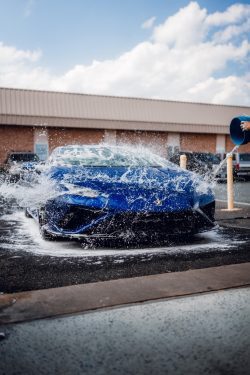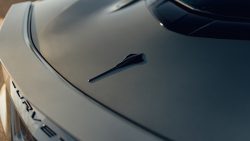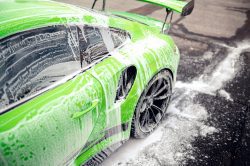Ceramic Coatings vs. Paint Protection Film (PPF) Part 2: Types of Ceramic Coatings and the properties…
Last time we discussed the differences between Ceramic Coatings and PPF. Now let’s explore the types and properties of what exactly makes up a Ceramic Coating…
Types of Ceramic Coatings:
When looking at types of ceramic coatings, we first want to figure out, what is our end goal and results we are chasing before the installation. Most if not all vehicles should be prepped and have some process of paint polishing or correction. Here at RI, we require all client’s vehicle to have paint prep and polishing and or paint correction done before our specific coating are installed.
There are various types and brands of coatings on the market.
Most commonly ask question is PRO vs CONSUMER products. In a nut shell, there is no comparison between the two. For many reasons, but the biggest reason to choose a PRO coating is the prep and installation. 97% of a proper ceramic coating service is the prep work done prior to install. If the prep is not right, 9 times out of 10, the end coating process will not be right either. Pro products have a distinct chemical compound and should only be installed by professionals who have been properly trained (YES, 100%, training makes all the difference in the world, no matter what you see or have been told). All of RI’s ceramic coating installers have gone through the proper rigorous training and are officially certified from our Coating Manufactures.
Nano Ceramic, Silica Based, Hydrophobic are some of the common types of coatings you may hear about. Each have a different chemical compound and have different properties which will benefit your specific needs.
– Nano-Ceramic Coatings typically will have ceramic base layers and a hydrophobic top layer constructed into one formula. These are also will harden on the surface that it is applied to, which will resist light marring/scratches and allow most/all contaminants to release from the surface with ease. Most of the modern professionally installed coatings will fall under this category. They will have extreme resistance to the weather, bird bombs, acidic rain levels, certain chemical resist, UV resistant, harden organic layers, and of course hydrophobic or sheeting properties. These will also be installed in multi-layers and have some type of curing process associated with them. Nano-ceramics will have a real-world life span of 2-4 years.
– Silca Based coatings seem to be fading away, but still have some market presence. Glass based coatings do in fact harden like the nano-ceramics, but typically lack most of the same properties. You will find these coatings are obtainable from consumer brands and online vendors as DIY kits. These coatings will have a real-world life span of 12-18 months.
– Hydrophobic Top Coatings are specifically designed to be installed over top of other coatings and offer extreme water beading or sheeting properties. They allow the water and debris to release from the surface easier than waxes and sealants. One issue that can occur with these extreme water beading coatings, are if the vehicle is kept in the direct sunlight and heat, the water droplets can act as magnifying glasses and cause surface spotting and may lead to water etch.
When choosing a ceramic coating to meet your specific needs and vehicle type, always consult a professional as a starting point. RI can answer all your questions and provide real-world experiences and results to help you choose. Call, text or email us today for more information.
Stay Tuned for Part 3 of this Blog Series.




